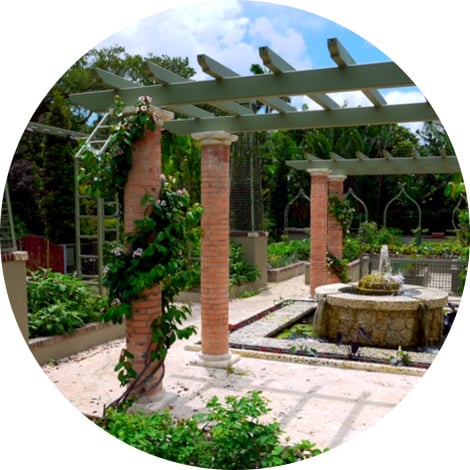The Peacock Challenge
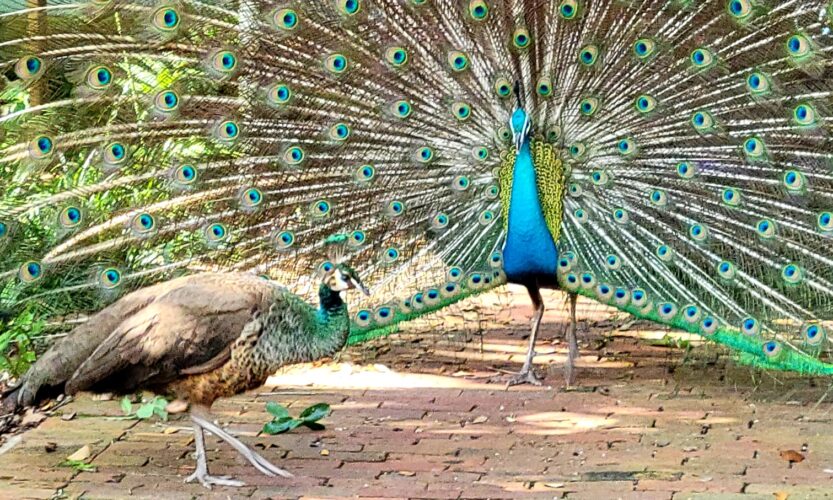
Each gardening season nature throws us a new curve or two to keep us on our toes. The peacock challenge this year was especially daunting, as we went from one strategy to another that didn’t quite solve the problem. Yes, the peacock is a beautiful creature, and we did not want to hurt them; however, how frustrating is it when they come in and destroy weeks or months worth of effort in the garden?
Fall Bed Prep
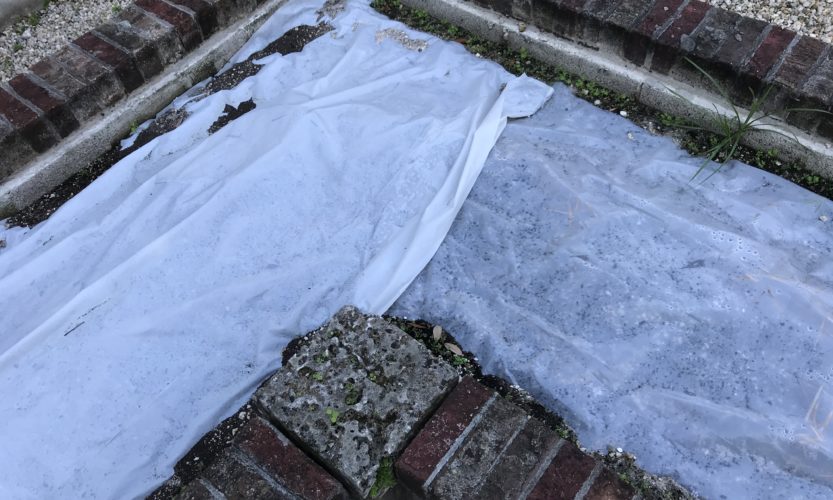
As another regular growing season (ie, fall-winter-spring) is winding down, we are beginning our fall bed prep. Don’t get me wrong, we still have some lingering harvests to enjoy – chard, onions, kale, collards, cucumbers and carrots, bok choy, celery & celeriac, French sorrel, and a nice variety of herbs. (We get less sun than a typical South Florida vegetable garden, which extends our harvest in the late Spring.) We will also be enjoying a few heat tolerant crops throughout the summer – hot peppers, eggplant, sweet potatoes, bok choy (“joy choi” in the summer) and okra. We do not plant a large variety in the summer as we have found over the years that a)crop usage is minimal for the effort they take to grow and b)keeping up with the insects on new plantings in our summer climate is nearly impossible. It is so darn hot to be battling insects out there. And we don’t want to cultivate nonbeneficial pests waiting in the soil for our fall crops either!
Mid-Growing Season
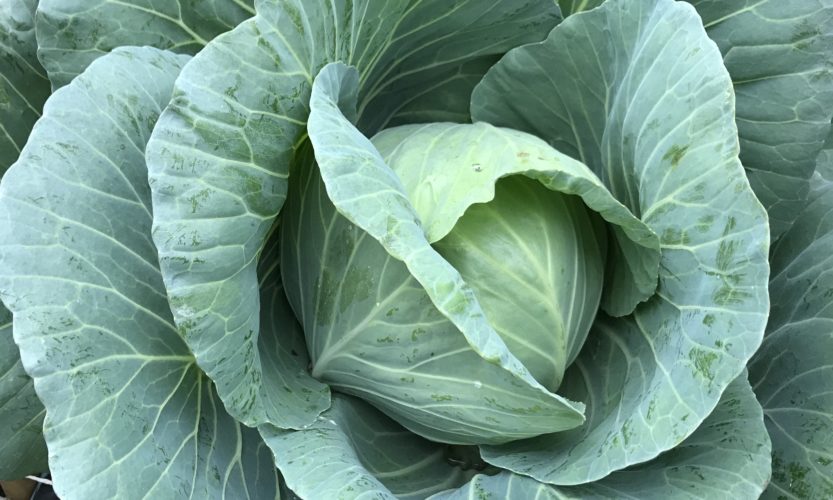
January and early February mark the middle of our growing season here in South Florida. It is a time for assessment and planning as to what we want to grow into the Spring. Many of the crops we grow can be planted throughout the entire season. Others (such as cabbages and heirloom tomatoes) have a shorter window, i.e. the time for planting them is running out, especially if starting them from seed.
Square Foot Gardening – We’re in Love!
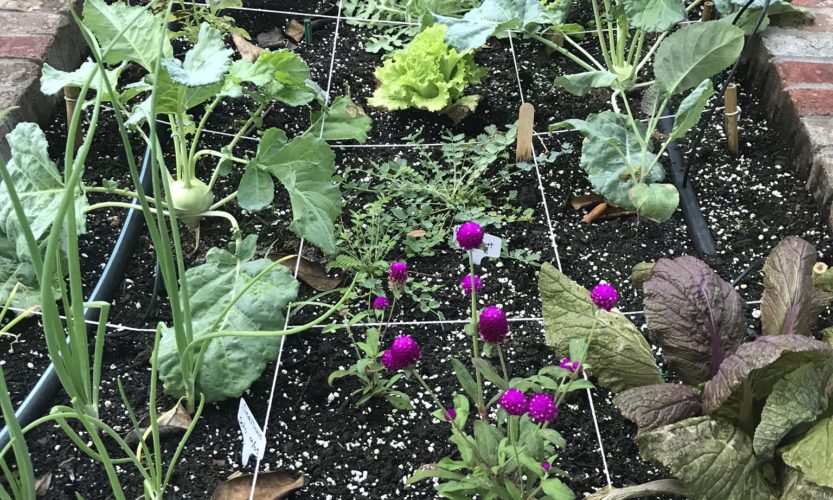
Several months ago I was exposed to the technique of square foot gardening, when an older edition of this book was loaned to me. Well, this approach seemed just plain weird – why bother planting everything all packed into little squares, what’s the point? And so many different things in one bed, kinda chaotically? And to bother doing the work to divide a bed up all precisely like that? Well, as they say, “Don’t knock it ’til you try it!” Now that we’ve tried it, we’ve fallen in love with it. No, not just a fly-by-night infatuation, this is true love!
Preparing the Soil – Update
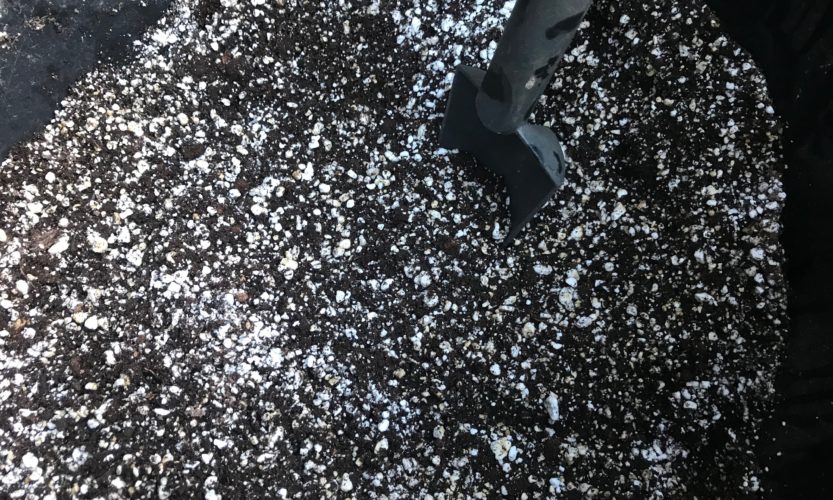
Last season I wrote a post explaining how we go about preparing the soil for planting which you can find here. Well…. this is a new season, with “more water under the bridge” – and new knowledge gained through experience, the advice of experts and our own research and reflections. Therefore I want to update last year’s post with what new ways we are preparing “soil” – or better said “growing media” – to start and grow our veggies. Don’t get me wrong – most of what I said last year still stands. Where we’ve significantly changed a practice that I touted back then, I will indicate it here and in that post as well.
Seedling City – Where It All Begins

We basically have three methods for starting our plants in the garden:
- Planting seeds in flats for transplanting seedlings later
- Planting seeds directly into the garden beds to sprout there
- Buying small starter plants to put directly into the beds
We definitely prefer to start our plants from seed, for a number of reasons. First, when you purchase seeds as opposed to starter plants, there’s a much greater variety to choose from. We also like cultivating them from their very beginnings in our own organic soil and supplements. And it’s much less expensive than buying plants. There is also the chance of introducing pests and/or diseases that are brought in on starter plants. Last but not least, who doesn’t love the hands-on experience and good feeling of engaging in a plant’s growth every step of the way?
The needs of plants vary, and some do better with one of the methods above over the others. For example, tomatoes need to be started in flats; beans need to be direct seeded into beds; and for most of our herbs we buy the starter plants.
For an idea about what particular plants we start in flats vs. direct seeding into beds, see our post Yesss!! Fall Planting, Part I. About half or more of our seedlings are started in flats, so here is some info and tips for using this method:
Planting seeds in flats for transplanting later
Our soil mixture is so vital to the success of the seedling. We have tried many different combinations, following advice of experts over the years, and based upon our experience, this is what we now use. Thoroughly mixed together:
How Do We Prepare the Soil for Planting?
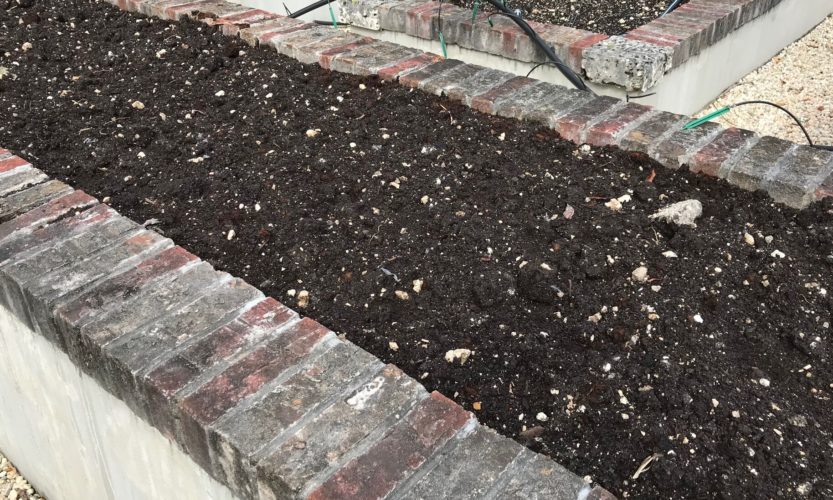
Fall is our “spring” when it comes to planting here in South Florida. Our growing season starts in the fall and runs through the spring, which is the opposite of most regions in the U.S. For the first few years that we had this garden, we had wonderfully rich organic soil that we were able to obtain at a steep discount. To “prepare the soil” meant opening the bags and dumping them in the beds, and voila! – our plants would thrive! But when we lost our source, we had to learn how to create the best soil environment for our plantings on our own. It has been a process – one that we improve upon each year, and continue to learn from.
There are many steps we take to prepare the soil for planting our new crops each year.
I. Before the fall season:
It’s Time to Order our Fall Seeds!
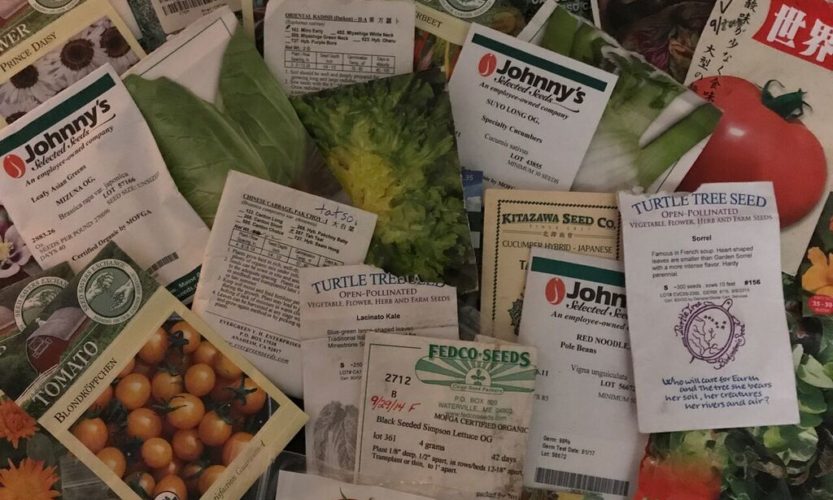
For a listing of what exactly we plant in the fall, see this chart: SEED INVENTORY – FALL 2017
So, how do we go about this process?
Compost It!
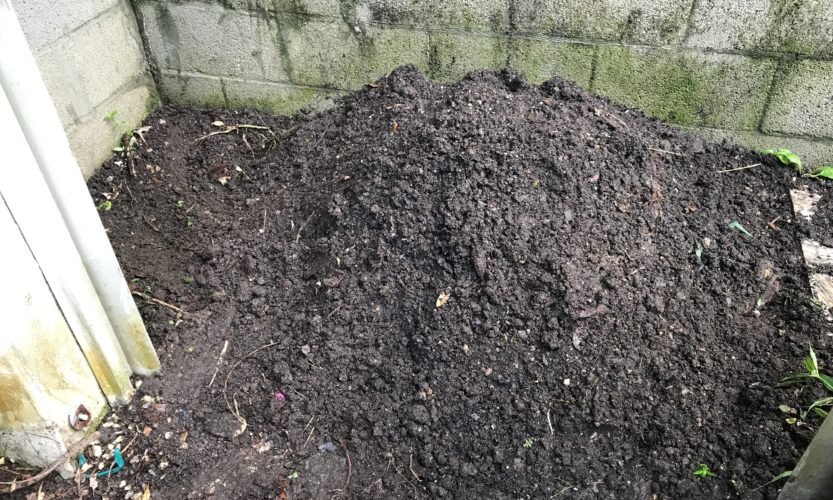
Creating the compost for our garden is a group endeavor. Members save and bring in their kitchen scraps, and in addition we have ongoing support from a facility’s kitchen nearby that saves us their fruit and veggie scraps, which is a big help. Free dried manure is accessible through one of our member’s chicken farm. We also have the benefit of the weeds and plants that are pulled after harvesting is done, stored right on our property to use for compost when we need it. Members also bring in bags of brown leaves they’ve raked up at home. So we’re really lucky to have all the ingredients we need readily available for composting!
While we carry on our composting routinely year round, we do amp up production during the summer in order to prepare nutrient-rich soil for fall plantings. Creating composted soil correctly is a methodical, multi-step process:
- Brown: twigs and leaves
- Green: manure, green plant parts & weeds, kitchen scraps
- Soil
Summer Cover Crops
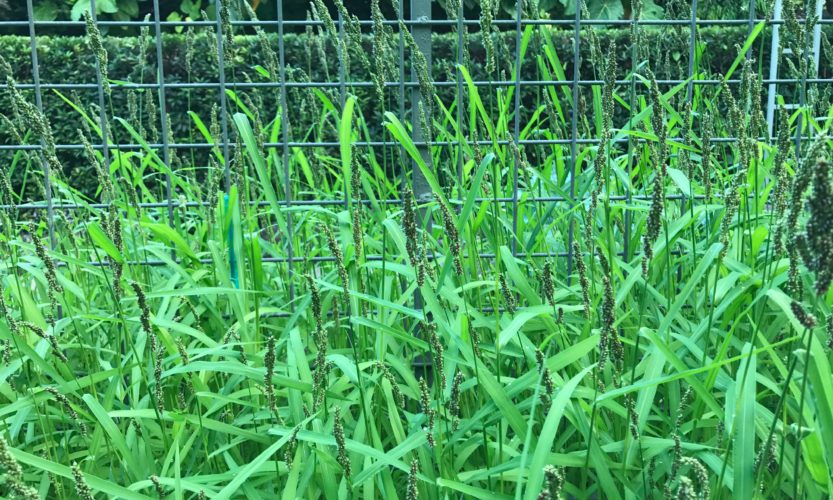
Cover crops are any of a wide variety of plants which are planted in the off-season in order to enrich the soil for the coming new growing season. There are many functions that cover crops perform:
